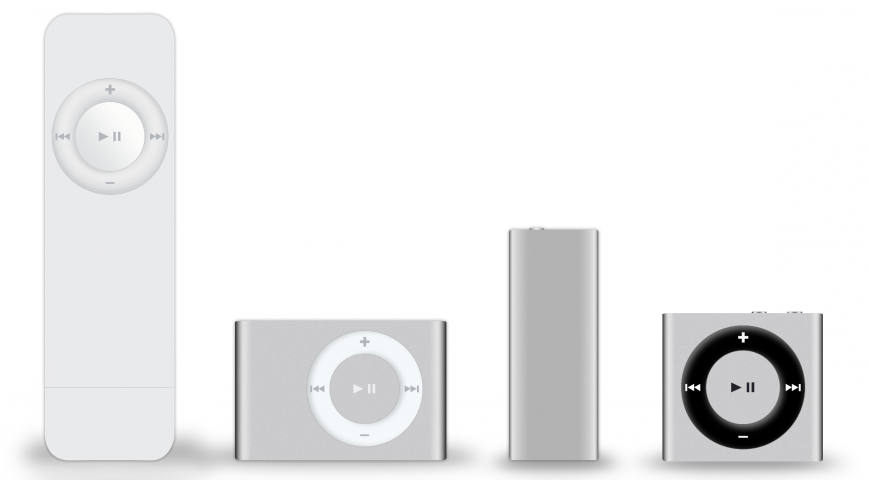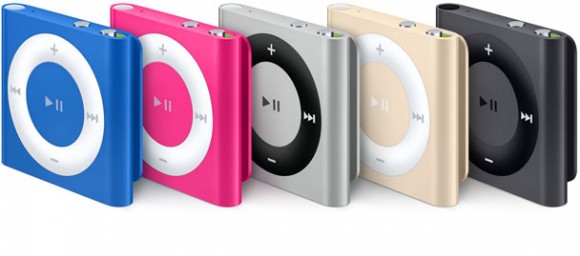January 11, 2005 Apple unveiled its music player iPod shuffle without a screen. Apple has drawn attention to the fact that many people pumped in their digital “hurdy gurdy” the music and listen to it in random order (shuffle mode), forgetting about the albums, artists, playlists. And when the density of the communication device, and the interface is not actually needed. Was the thinking in Cupertino and introduced the iPod shuffle. He stood out among, frankly, the same competitor models, is the lack of a screen. Only the buttons: play, skip to the next or previous track, volume down and switch the order of songs (including the main — random).
By the time of the announcement of shuffle Apple had two models of iPods: iPod classic with a very roomy hard drive and submitted a year before the iPod mini with a special tiny 1-inch hard drive 4 GB. The latter managed has given way to serious market player on the flash memory (in fact, seriously, they decreased by half), but wedge had to knock out the wedge, and they became shuffle. He had twice as much memory than its competitors with a similar price and already in March 2005, the new gadget was holding 58% of the market players on the flash memory.

iPod shuffle all four generations
Only the iPod shuffle has gone through four incarnations, with the third generation player is left with no buttons to control it had buttons on the headphone cord. However, the following version of the ring of keys on the player it was returned. It was released in September 2010, and the next two updates (the latest in July 2015) were exclusively decorative and varied choice of hull colours. Shuffle now costs $ 49.

iPod shuffle version 2015
11 January 2007, China shot down its own space satellite. Meteorological apparatus “Fengyun–1C” is anachronistic and should be removed from orbit, but the Chinese decided to get rid of it any other way.
The satellite was shot down using a missile with a kinetic warhead is hidden behind this term is essentially just the projectile without explosives, which crashed into the goal and the shot destroys it. This method is suitable for objects less evasive, and companion this definitely was. After the collision, “Fengyun–1C” split into thousands of shards, and now they make up 28% of all waste in orbit. Western space powers refused to test the weapon outside of the atmosphere in the year 1985, when it became clear the risk to make the space completely unusable. However, subsequent tests China conducted not on the orbital satellites, and ballistic missiles — the fragments fell safely to the ground.
The goal of the “crossbow” is pretty simple: China has demonstrated its ability to destroy targets in orbit which is used by many — for example, American spy satellites and military vehicles.
Interestingly, the film “gravity” begins, the characters fall under “rain” from the debris of exploded satellites. For some reason Russian satellite.
